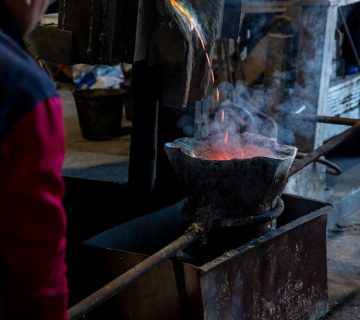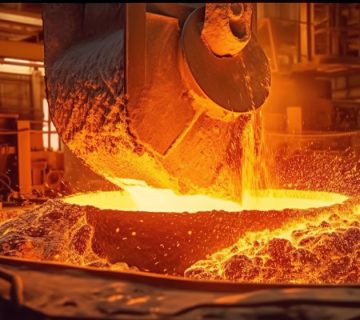Induction furnace in India popularly known for melting any type of metals with insufficient heat. But on the road to optimization through advanced control systems, these basic processes offer significant benefits in terms of performance, efficiency, precision, profitability, and throughput. Here’s a closer look at how customized control solutions, continuous monitoring and seamless integration can make induction furnace operations more efficient.
Tailored Control Solutions
Induction furnaces must function precisely to maximize the performance potential of the material and process in use due to the complexities of various materials and processes. Specialised control systems expert can enhance productivity for induction furnaces
Use of Adaptive Control Algorithms: Implementing adaptive control algorithms allows for dynamic adjustments to operational parameters based on the type of metal being melted, desired temperature, and other process variables. This flexibility results in more uniform quality of the molten substance.
Precision Temperature Management: Building Blocks Provide Essential Temperature Management for Reliable Melting Processes. Because of this, advanced control solutions can use fuzzy logic or machine-learning techniques that will allow the Furnace to control and maintain certain temperature ranges very accurately, which will ensure product quality and reduce wastage.
Predictive Performance Modelling: Leveraging historical operational data and applying modelling techniques, facilities can be proactive in predicting how a modification in operational parameters may impact the furnace performance. Such foresight helps make premature adjustments that serve to streamline melting processes and energy consumption.
Real-Time Monitoring
Induction furnaces need to be run at maximum efficiency, and real-time monitoring is critical to ensure this. Such facilities can benefit from insights into their operations through advanced monitoring technologies.
- With data analytics platforms, the key performance indicators (KPI) can be collected and analyzed in real-time by implementing the phenomena. Such platforms can supervise variables like temperature, power input, and material flow, empowering operators to make rapid, informed decisions.
- Condition-Based Maintenance: By keeping an eye on the state of components related to the induction furnace, it is possible to anticipate failures before they happen. Using real-time data to detect wear and tear, or other anomalies, enables facilities to proactively schedule maintenance activities, thus reducing downtime and ensuring that the facility can operate seamlessly.
- User-Friendly Dashboards- By visualizing real-time data through user-friendly dashboards, operators can monitor performance intuitively. Better visibility of day-to-day operational processes helps respond faster to deviation from the standard operating procedure (SOP).
Integration with existing systems
Seamless integration into existing infrastructure is necessary to take full advantage of new advanced control systems. This integration allows for upgrades without interrupting existing operations and helping to improve the overall return on investment for the facility.
InteroperabilityThis means the advanced controls should integrate as seamlessly as possible into what is there, integrating with the existing machinery, sensors, and data management systems. That compatibility minimizes expensive overhauls and speeds up the deployment.
Gradual Ease: Instead of overhauling the entire system, facilities can use a phased or modular approach, implementing new control solutions as each phase of the burn completes. This phased implementation gives operators the opportunity to ease into new systems without overloading the crew or halting production.
Training and Support: This requires training for existing staff on the new control system and how it integrates into existing operational processes. Such well-trained professionals will be in a better position to efficiently leverage the new technologies, ensuring the capabilities of the advanced control systems are fully unlocked.
Conclusion
Using advanced control systems to optimize induction furnace operation is an approach that can enable powerful improvements in efficiency, accuracy, and throughput. Custom control solutions, real-time monitoring, and integration with legacy systems enable facilities to optimize operations throughout the ecosystem. Such attention both fosters enhanced quality and minimizes operational disruptions, and positions companies ahead of the curve in an ever-changing manufacturing sector. In perspective, further development and adaptability in the industry will be critical in harnessing the full capability of induction furnace technology



No comment